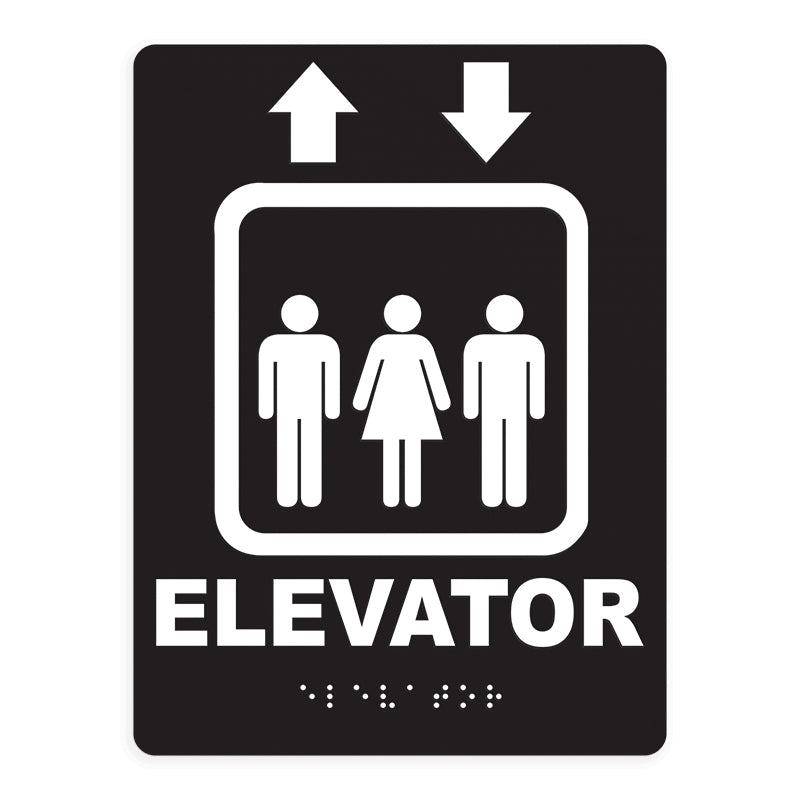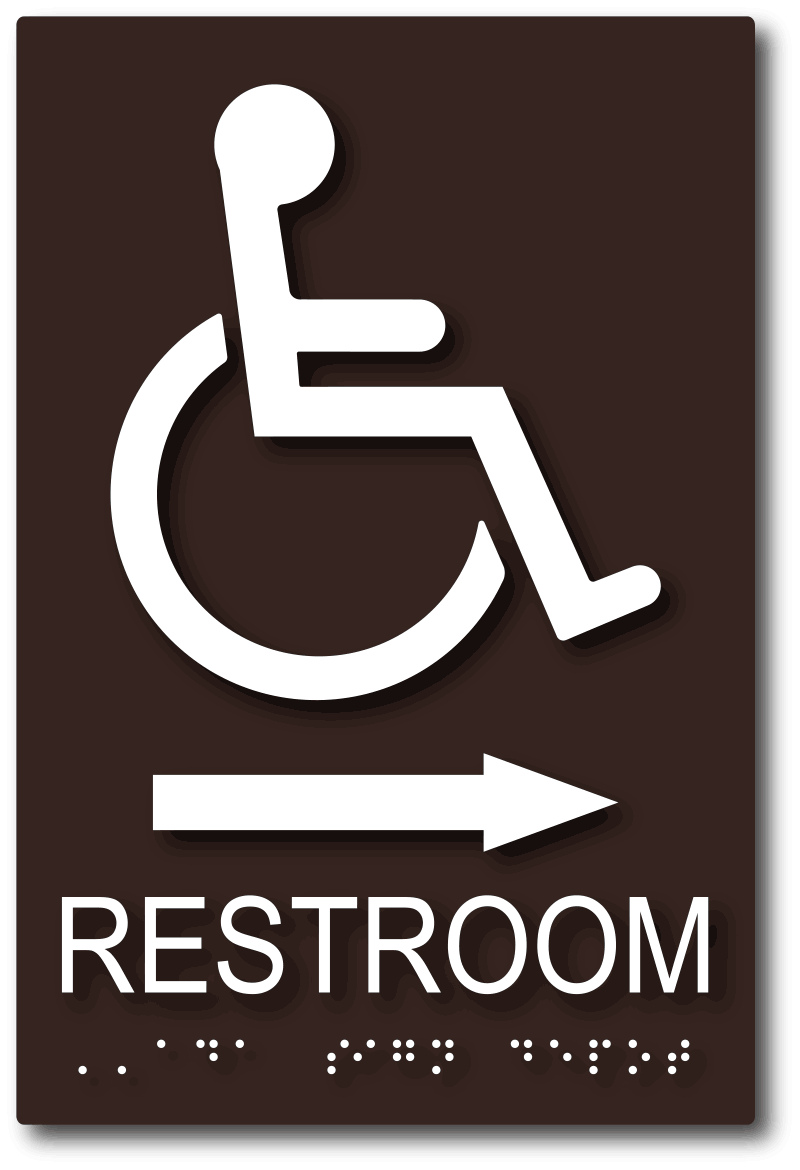ADA Signs: Essential Tools for Inclusive Environments
ADA Signs: Essential Tools for Inclusive Environments
Blog Article
Exploring the Trick Functions of ADA Indications for Enhanced Accessibility
In the realm of access, ADA indications offer as quiet yet powerful allies, making certain that spaces are accessible and inclusive for individuals with specials needs. By integrating Braille and tactile components, these signs break obstacles for the visually impaired, while high-contrast shade systems and readable typefaces cater to varied visual requirements.
Importance of ADA Conformity
Ensuring compliance with the Americans with Disabilities Act (ADA) is essential for cultivating inclusivity and equivalent access in public areas and work environments. The ADA, established in 1990, mandates that all public facilities, employers, and transportation solutions suit individuals with impairments, ensuring they appreciate the same legal rights and chances as others. Conformity with ADA criteria not only fulfills legal commitments yet also enhances a company's track record by showing its dedication to variety and inclusivity.
One of the key aspects of ADA compliance is the application of easily accessible signs. ADA indicators are made to ensure that individuals with impairments can quickly navigate with structures and rooms. These indicators must follow particular standards pertaining to size, font style, shade comparison, and placement to ensure presence and readability for all. Appropriately implemented ADA signs aids eliminate obstacles that individuals with disabilities commonly run into, thus advertising their self-reliance and confidence (ADA Signs).
Furthermore, adhering to ADA laws can alleviate the risk of potential penalties and legal repercussions. Organizations that fall short to abide by ADA guidelines might deal with suits or penalties, which can be both financially burdensome and destructive to their public picture. Hence, ADA compliance is essential to cultivating a fair environment for every person.
Braille and Tactile Elements
The unification of Braille and tactile components into ADA signage personifies the principles of access and inclusivity. These features are critical for individuals that are visually impaired or blind, allowing them to browse public spaces with higher freedom and confidence. Braille, a tactile writing system, is necessary in providing composed details in a format that can be easily viewed via touch. It is generally put under the corresponding message on signs to guarantee that individuals can access the details without aesthetic help.
Tactile aspects prolong beyond Braille and include elevated signs and characters. These elements are designed to be noticeable by touch, permitting people to identify room numbers, restrooms, departures, and other important locations. The ADA sets specific standards pertaining to the dimension, spacing, and placement of these responsive components to maximize readability and make sure consistency throughout various environments.

High-Contrast Shade Plans
High-contrast color design play a critical role in boosting the visibility and readability of ADA signs for individuals with aesthetic disabilities. These systems are necessary as they take full advantage of the difference in light reflectance between text and history, ensuring that indications are easily noticeable, also from a distance. The Americans with Disabilities Act (ADA) mandates the usage of particular shade contrasts to suit those with limited vision, making it a crucial element of conformity.
The effectiveness of high-contrast shades depends on their capability to stand out in numerous lights conditions, including dimly lit environments and areas with glow. Usually, dark message on a light background or light text on a dark history is used to achieve ideal comparison. For instance, black text on a yellow or white history provides a plain aesthetic difference that helps in fast acknowledgment Read Full Article and comprehension.

Legible Fonts and Text Dimension
When considering the design of ADA signage, the option of readable typefaces and appropriate text size can not be overemphasized. These elements are essential for making you could look here sure that indicators come to people with visual disabilities. The Americans with Disabilities Act (ADA) mandates that font styles have to be not italic and sans-serif, oblique, script, highly decorative, or of unusual form. These needs help guarantee that the text is quickly legible from a range which the characters are appreciable to varied audiences.
According to ADA standards, the minimum text elevation ought to be 5/8 inch, and it should raise proportionally with seeing range. Consistency in message dimension contributes to a natural visual experience, helping individuals in navigating settings effectively.
Furthermore, spacing in between letters and lines is integral to readability. Appropriate spacing avoids personalities from appearing crowded, boosting readability. By sticking to these requirements, designers can considerably improve access, guaranteeing that signage offers its designated purpose for all individuals, regardless of their visual capacities.
Efficient Placement Methods
Strategic positioning of ADA signage is vital for optimizing availability and making sure conformity with lawful requirements. ADA standards specify that indications should be mounted at an elevation between 48 to 60 inches from the ground to ensure they are within the line of view for both standing and seated people.
Furthermore, indicators should be positioned nearby to the latch side of doors to enable easy recognition before access. Consistency in indicator placement throughout a center improves predictability, reducing complication and enhancing overall individual experience.

Conclusion
ADA indicators play an essential role in promoting availability by integrating features that deal with the needs of individuals with disabilities. These components jointly promote an inclusive atmosphere, underscoring the importance of ADA compliance in have a peek at this website making certain equivalent accessibility for all.
In the world of availability, ADA indicators offer as silent yet powerful allies, guaranteeing that areas are accessible and inclusive for individuals with impairments. The ADA, enacted in 1990, mandates that all public facilities, employers, and transportation solutions suit individuals with disabilities, guaranteeing they enjoy the very same civil liberties and chances as others. ADA Signs. ADA indications are created to guarantee that individuals with specials needs can conveniently browse via buildings and rooms. ADA standards stipulate that indicators ought to be mounted at an elevation in between 48 to 60 inches from the ground to guarantee they are within the line of sight for both standing and seated individuals.ADA indicators play an important duty in promoting accessibility by incorporating features that attend to the needs of individuals with disabilities
Report this page